When it comes to wilderness survival, the knowledge of utilizing natural resources for nutrition can be a game-changer. Pine bark cookies, a traditional survival food
, have a rich history and have been used by various indigenous cultures and survivalists for centuries. These cookies provide sustenance in the wild and offer a unique taste and a deep connection to our natural world.
In this article, we will teach you how to make pine bark cookies and cover everything from harvesting to baking the cookies. I’ve also included some ingredients to transform this survival food into an absolute treat, adding a touch of modernity to this ancient tradition.
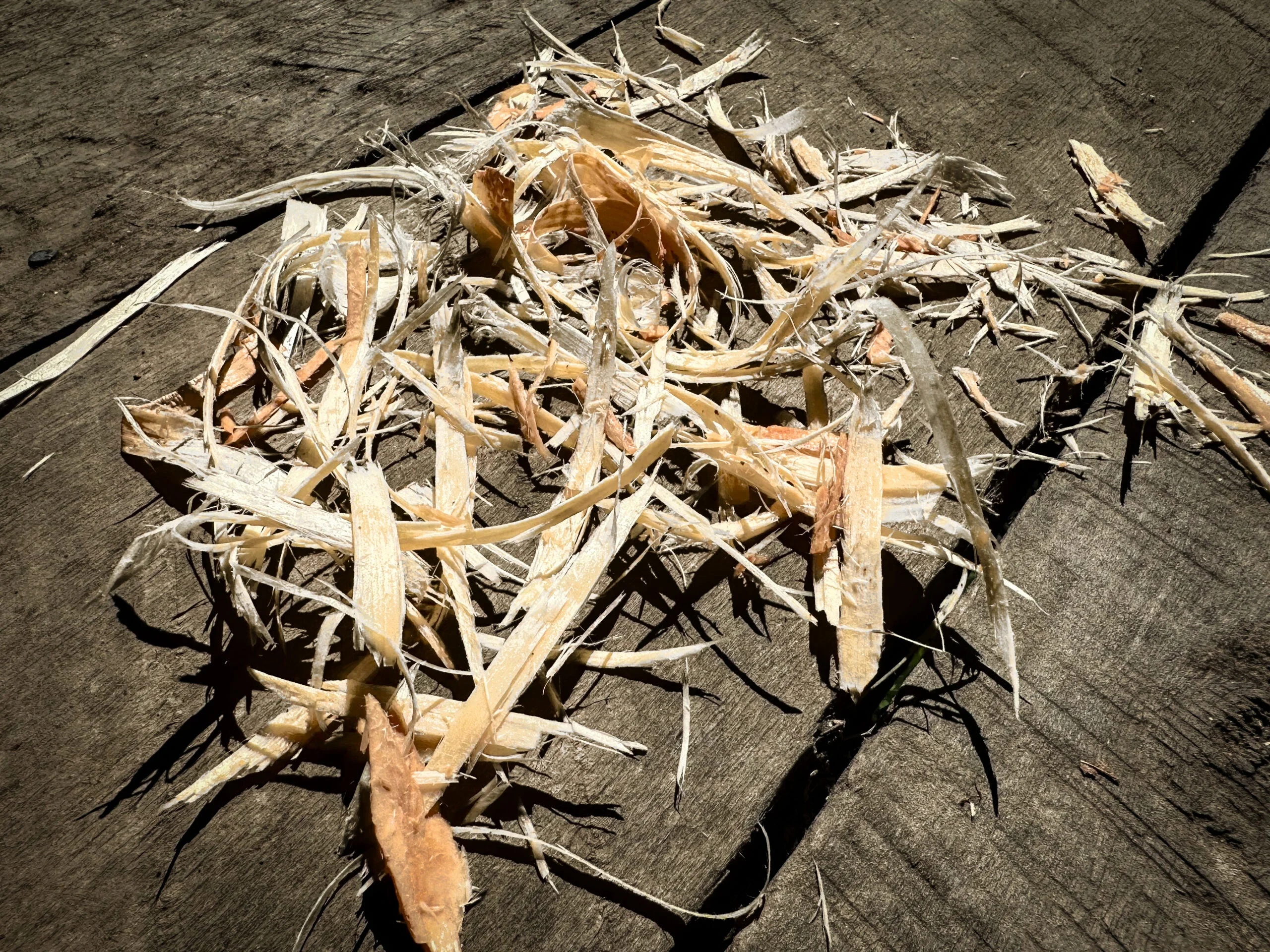
Cambium, the inner bark of a pine tree, is rich in vitamins and fiber. Jennifer Caudill
Why Pine Bark?
, mainly the inner bark or cambium layer, is a treasure trove of nutrients. It is rich in vitamins A and C and fiber, making it a powerhouse of nutrition. This part of the tree is not only edible but can also be harvested without causing significant harm to the tree—if done correctly. Pine bark has a long history of use as a survival food, particularly during times of scarcity. I was fortunate to find a recently blown-down Pinus virginiana (Virginia, yellow pine) for this recipe. This tree—which was still alive, but soon to be dead—was a perfect choice to harvest as much of the cambium layer as I needed without harming a live tree.
Choosing the Right Pine Tree
When harvesting pine bark, it’s essential to choose the right tree to ensure it’s safe for consumption. Here are some commonly used species:
Eastern White Pine (Pinus strobus) is my favorite because it has more sucrose than other varieties, which makes for a sweeter cookie.
Virginia Pine (Pinus virginiana) is my second favorite because it is abundant in my area. Its bark contains considerable fiber.
Ponderosa Pine (Pinus ponderosa) are found in the northwest and far western United States.
Lodgepole Pine (Pinus contorta) are found in northern California and continuing into Canada in Western North America.
Scots Pine (Pinus sylvestris) are found in northern Europe, so I’m throwing this one in for our European foragers.
Harvesting Pine Bark: Step-by-Step Instructions
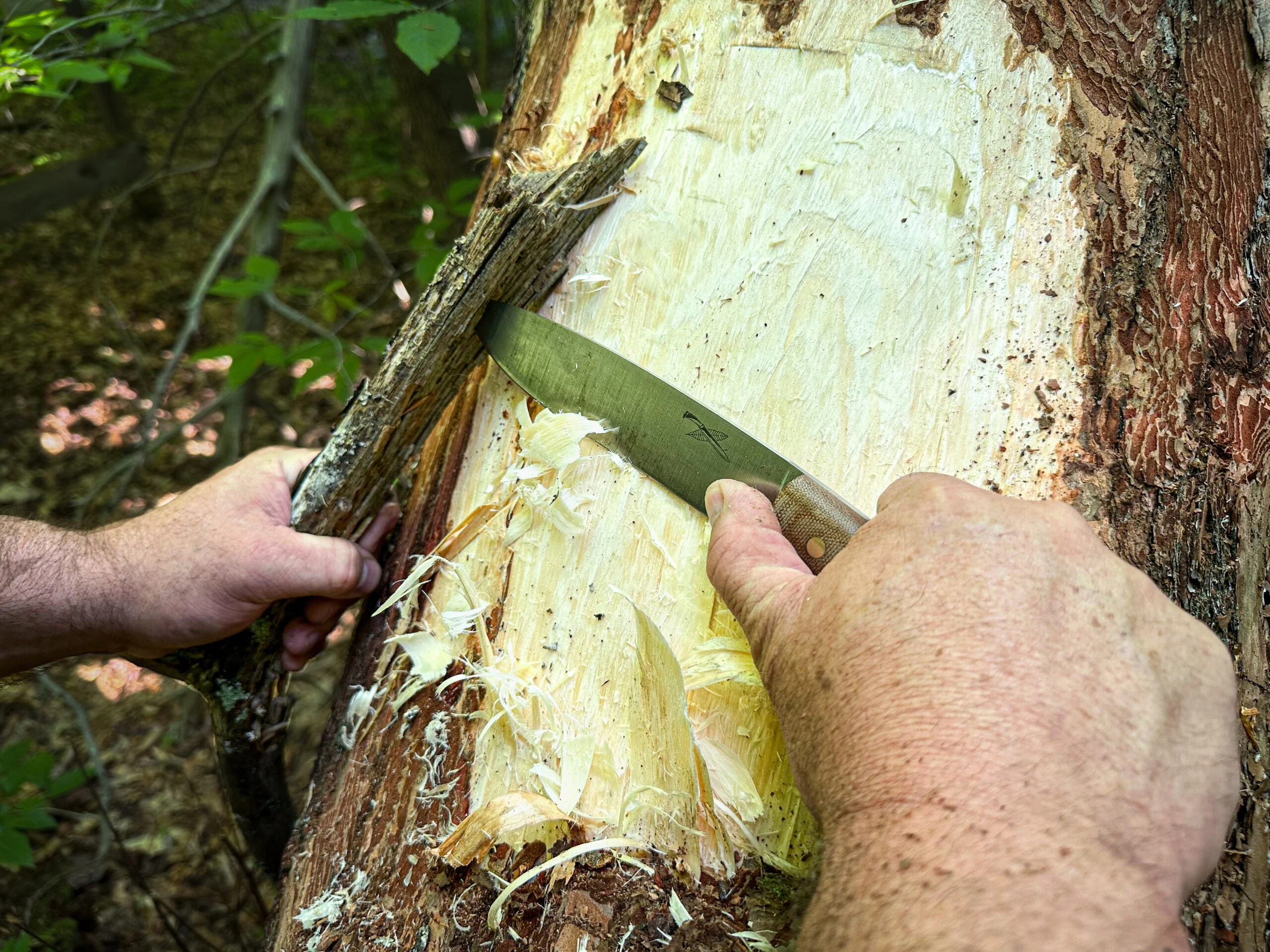
The author uses a makeshift draw knife to strip a recently down pine tree to strip some cambium. Jennifer Caudill
You will want a sharp knife
or draw knife to make easy work of this part of the process. Get a good collection bag or bandana to gather materials and move them to where you will process the ingredients.
Identify a Healthy Tree: Choose a mature, healthy tree. Avoid trees that are diseased or damaged.
Locate the Cambium Layer: The cambium is the soft, moist layer between the outer bark and the wood. This is the edible part. You can use a draw knife on the thick park or just the sharpened spine on a knife on those with the thin layering of outer bark.
Harvest: Cut a vertical strip of the outer bark, being careful not to take too much from any tree. Harvesting from different trees is best to avoid significantly harming one tree. If you are fortunate, as I was, to find a tree that was recently blown down, take as much as you wish. It will soon be dead and falling off. Peel back the outer bark to reveal the cambium layer. Carefully slice off the cambium layer in thin strips.
Preparing the Bark: Step-by-Step Instructions
Once you have harvested the cambium, it’s time to prepare it for cooking. Pine bark can be tricky, so some preparation is required to make it more palatable.
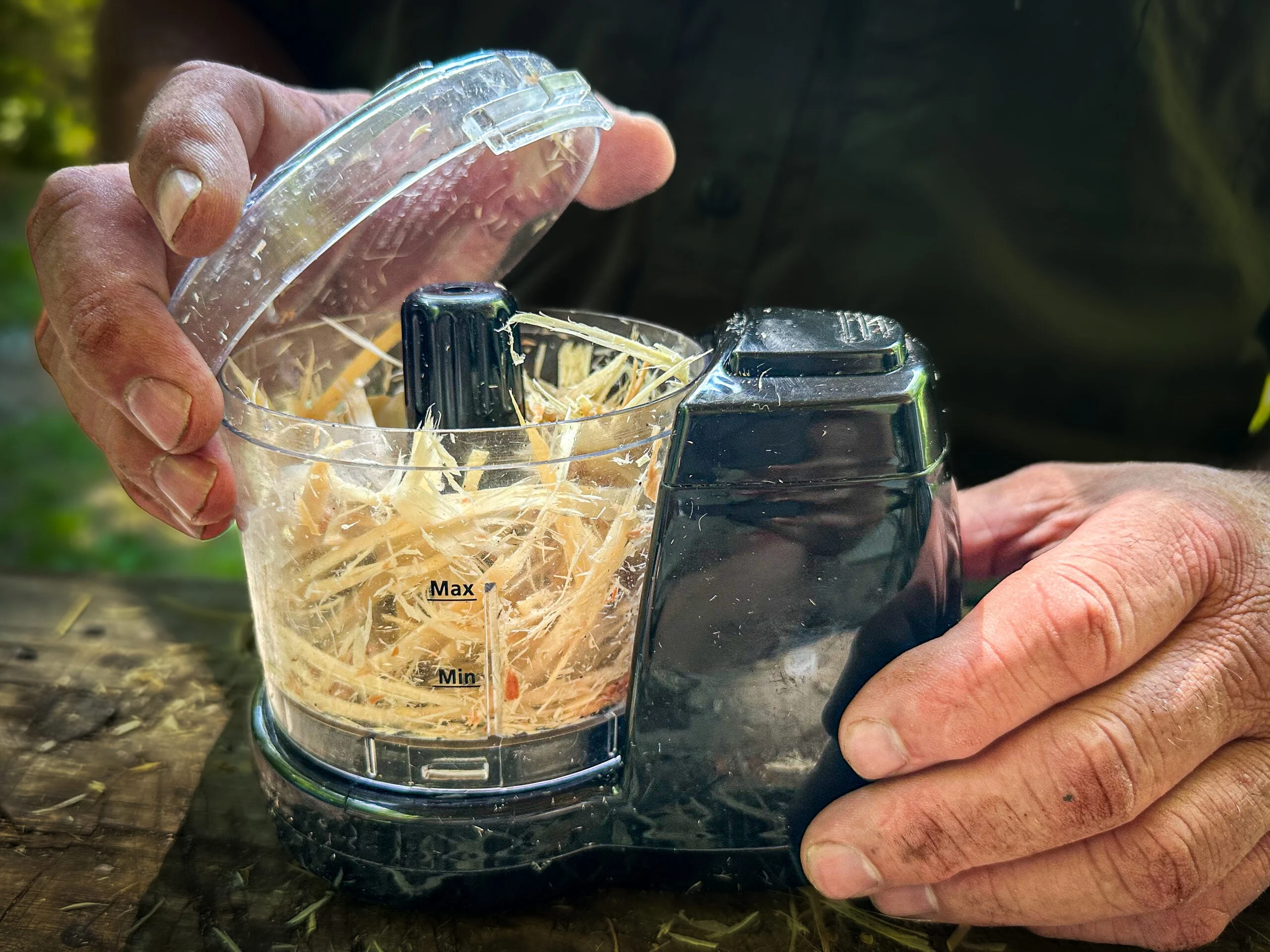
You can grind the bark with a mortal and pestle—but using a food processor is a lot easier. Jennifer Caudill
Cleaning: Rinse the bark strips thoroughly to remove any dirt or debris.
Drying: Lay the strips out to dry in the sun for a few hours, or use a dehydrator if you have one. Drying the bark makes it easier to grind into a powder.
Grinding: Once dried, use a mortar, pestle, or food processor to grind the bark into a fine powder. This will be the base for your cookies. I was excited to get the cookies made, so I used a food processor for this one.
Ingredients for Pine Bark Cookies
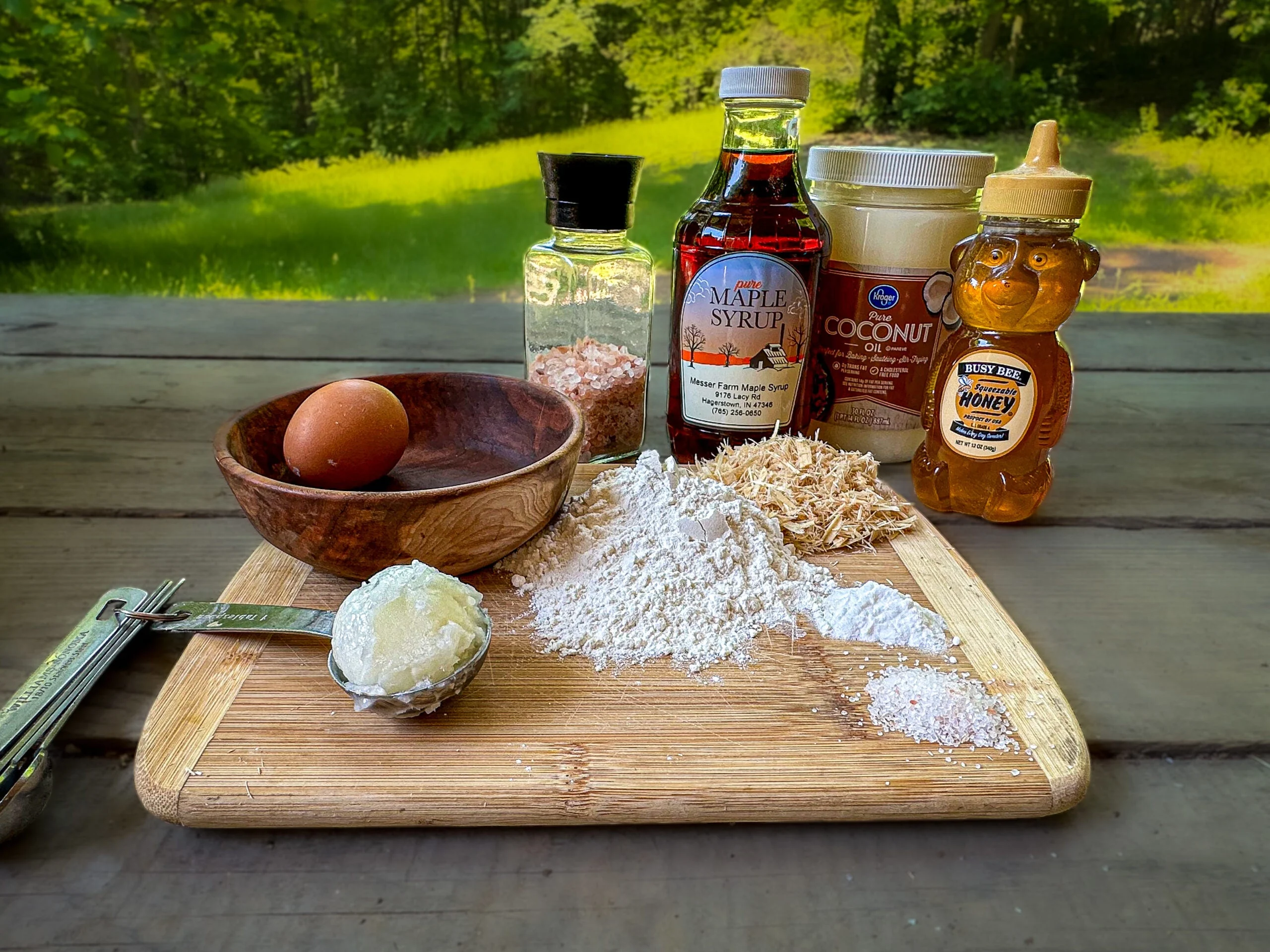
You don’t need many ingredients to make a batch of pine bark cookies. Jennifer Caudill
To make pine bark cookies, you will need a few additional ingredients. These can vary depending on what you have available, but a basic recipe includes:
1 cup of pine bark flour (ground pine cambium)
1 cup of all-purpose flour (or more pine bark flour for a more rustic, gluten-free option)
1/2 cup of honey or maple syrup (for sweetness)
1/4 cup of melted butter or oil
1/2 teaspoon of baking soda
1/2 teaspoon of salt
One egg for binding (optional)
Water (as needed to achieve the right dough consistency)
Optional: nuts, dried berries, or chocolate chips for added flavor and texture (I used dried cranberries and pumpkin seeds for this recipe to add texture and bonus flavor.)
How to Bake Pine Bark Cookies
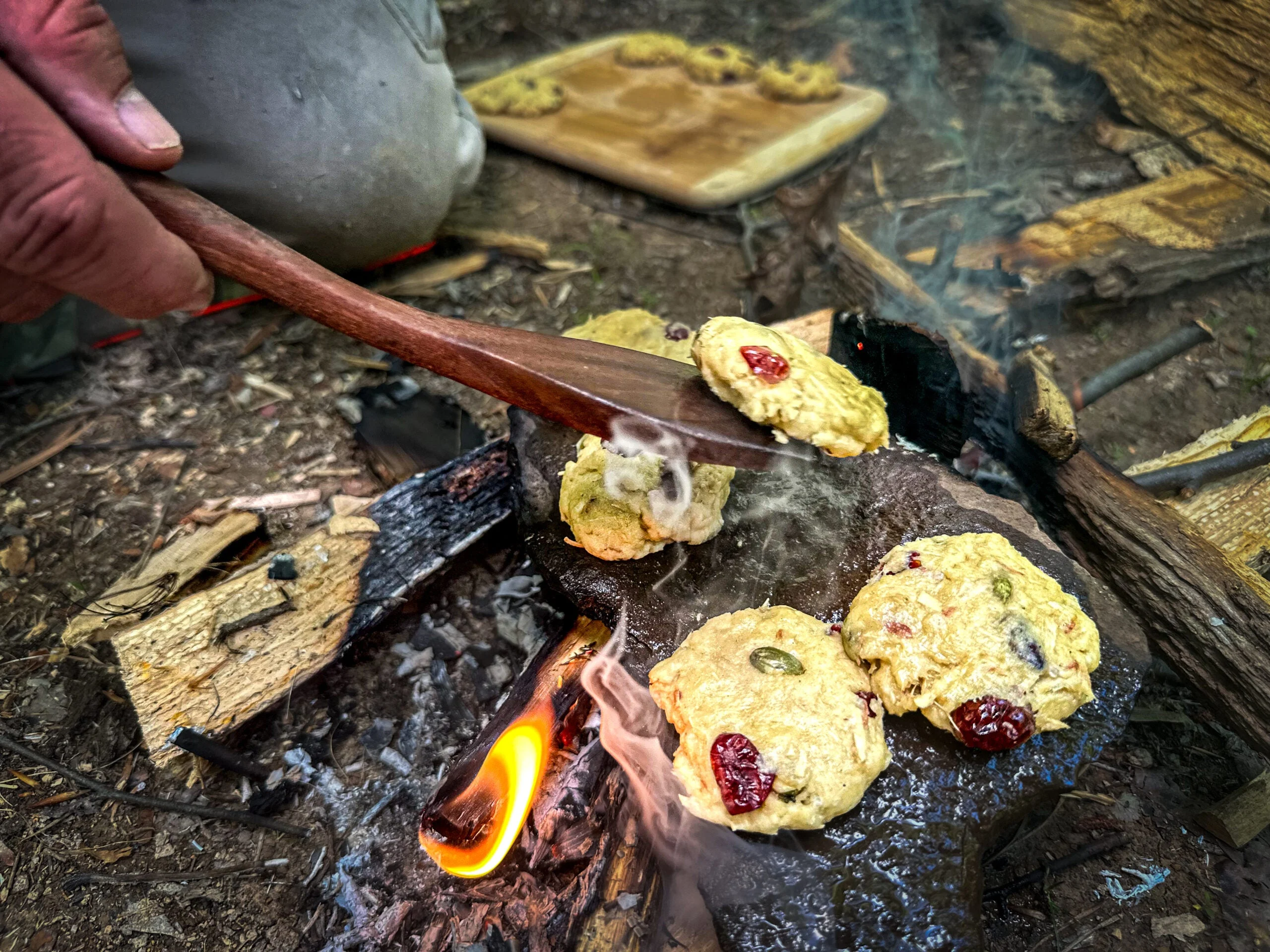
The author flips a batch of cookies that he baked on a flat stone. Jennifer Caudill
Find a smooth stone to cook on. Choose rocks from the environment, but avoid those found in creeks. Creek rocks hold moisture and, under heat, will burst and throw fire and rock debris around.
Build a fire with dense hardwoods on top of your rock. This will heat the rock during the process. Allow the coals to get ample amounts on all sides of the rock. For our purposes here, I chose a thin rock and stacked it on two pieces of firewood to get it off the ground. I then built a fire under and around the rock to get it hot.
Mix the dry ingredients: In a large bowl, combine the pine-bark flour, all-purpose flour, baking soda, and salt.
Add the wet ingredients: Mix in the honey or maple syrup, melted butter or oil, and the egg if you’re using one. Stir well to combine.
Form the dough: Gradually add water to form a firm but not too sticky dough. If adding nuts, berries, or chocolate chips, fold them into the dough at this stage.
Shape the cookies: Use your hands to form the dough into small balls, then flatten them into cookie shapes. Place them on the rock. Placing oil on the rock will also help prevent the cookies from sticking.
Cook on the rock with fire around it until the edges are brown. Keep an eye on them to avoid burning.
Scrape the cookies off with a spatula and let them cool on a rock or log that was not used in the fire.
Nutritional Benefits
Pine bark cookies are more than just a survival food; they are packed with nutrients that can be beneficial in a survival situation. The cambium layer is rich in fiber, which aids in digestion. Adding honey or maple syrup provides natural sugars for energy, and any added nuts or berries contribute essential fats, proteins, and vitamins.
Tips for Making the Best Pine Bark Cookies
Experiment with Flavors: Pine bark has a unique, slightly sweet taste. You can enhance the flavor by adding spices like cinnamon or nutmeg.
Texture Matters: If the bark flour is too coarse, it can make the cookies gritty. Ensure the bark is ground as finely as possible. I will use regular kitchen appliances to do this when it is available. A mortar and pestle is a great way to keep it natural, but it takes considerable time to complete.
Conservation: Remember to harvest bark sustainably. Take only a little from one tree, and always be mindful of the environment. This means you should only remove bark some of the way around one tree. This is called girdling and will kill the tree.
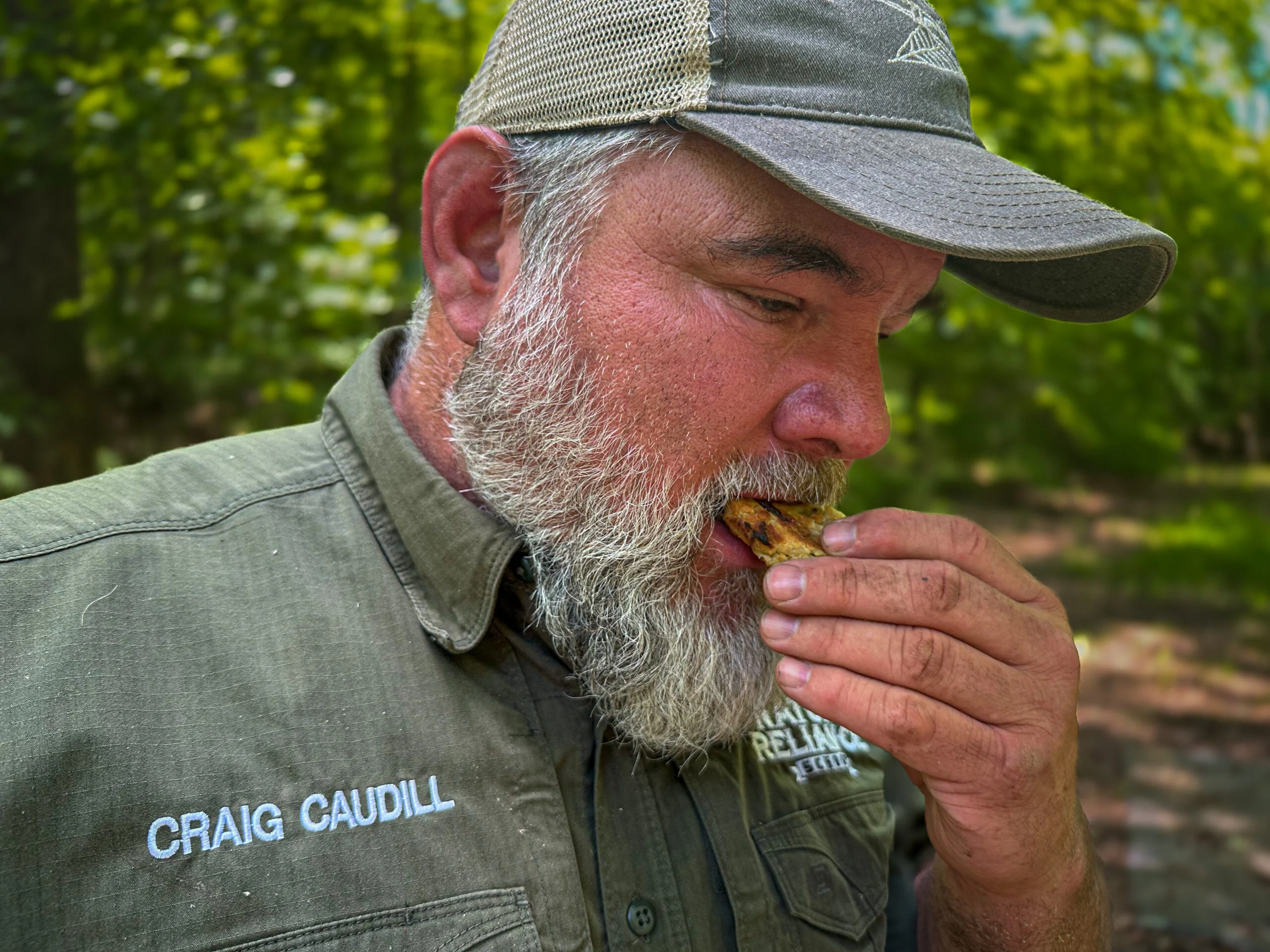
The author goes in for a bite. Jennifer Caudill
Final Thoughts on Pine Bark Cookies
Making pine bark cookies is a rewarding experience that connects you to traditional survival skills and the natural world. Whether preparing for a backcountry adventure or simply curious about alternative foods, these cookies offer a unique and nutritious option. By following the steps outlined in this guide, you can create a batch of pine bark cookies that are both delicious and packed with the sustenance needed for any wilderness journey.
So, next time you’re out in the woods, take a moment to appreciate the pine trees around you. They’re a beautiful part of the landscape and a valuable source of nutrition waiting to be discovered. Happy baking!


